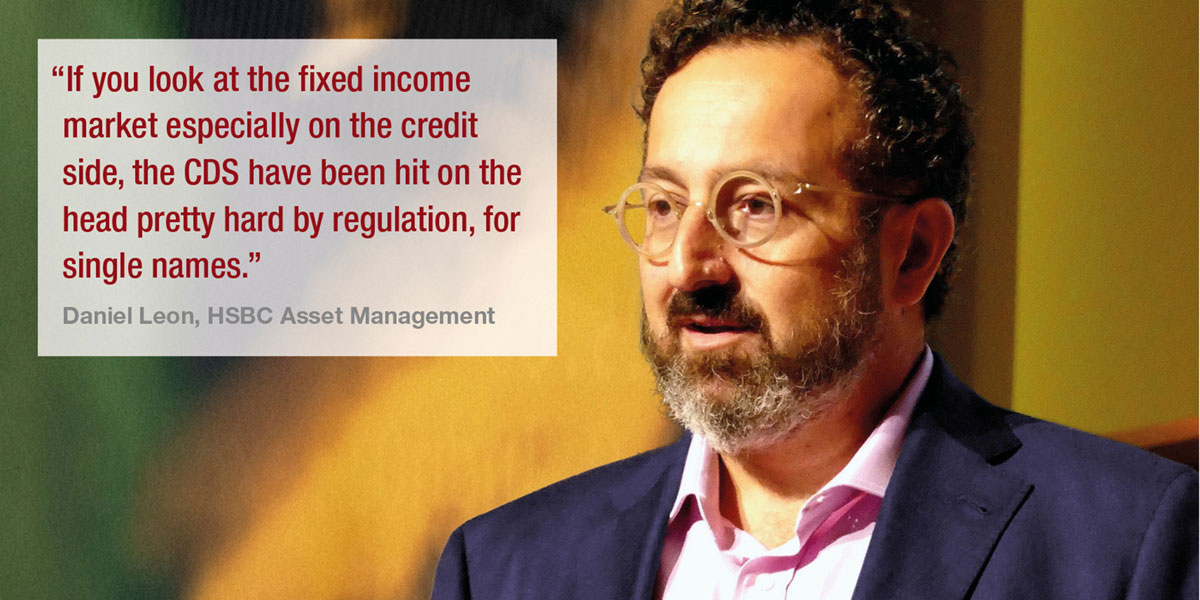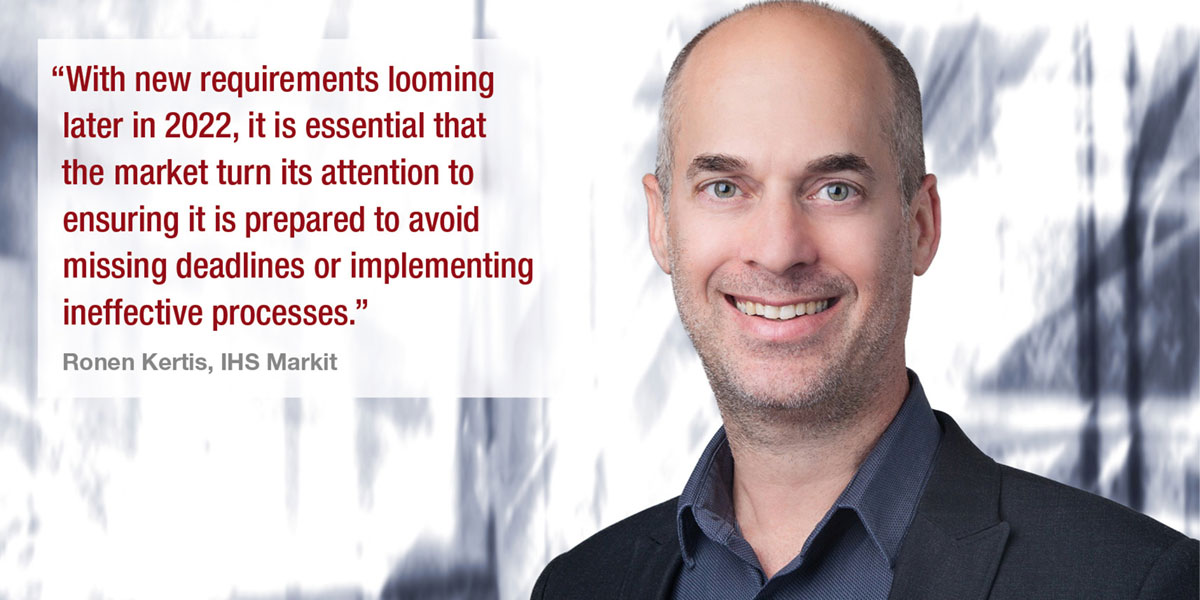In 2022 regulation and market activity may see greater adoption of derivatives, but traders need to be cognisant of their limitations. Dan Barnes reports.
Derivatives, across both listed and over-the-counter (OTC) markets, are an attractive tool for engaging with risk and position management.
However, the post-2008 regulatory environment and anti-free market politics are throwing up barriers to efficient derivatives trading. Not only is equivalence between the UK and the European Union still unresolved, but credit markets are also still beset by liquidity problems as a result of sell-side capital rules.
Using non-cash instruments is incredibly helpful. A portfolio manager running a long-only strategy without access to derivatives will have to sell down their positions to become defensive if things go sour.
The choice between holding investible cash securities or actual cash is limited, but if they use derivatives, they get the extra flexibility to stay invested, but still be defensive.
“Hedging helps portfolio managers maintain preferred investment views and themes while immunising the portfolio against volatility or unforeseen market developments,” says Brian Mangwiro, director research multi asset group at Barings. “For example, we can buy country credit default swaps (CDS) or corporate credit CDX to hedge against volatility in emerging market (EM) hard currency bonds or corporate bonds, respectively. Equally, in an aggressive rate hike cycle, we can immunise cash bond portfolios by ‘paying’ (selling) interest rate swaps to hedge against rising interest rates.”
They are also a good way to manage risk in the credit markets when trading cash instruments is challenging.
“Derivatives can pull liquidity together and create liquidity in the markets,” says Daniel Leon, head of trading at HSBC Asset Management.
Mangwiro notes, “We can generate excess returns on a leverage basis. That’s key for absolute return mandates. For benchmark strategies we also use derivatives to hedge against market risk, ranging from geopolitical developments, change in monetary policy regime or any other event-driven market risk(s).”
Regulatory impediments
The derivatives markets are global, but liquidity is typically provided in focused markets – such as at exchanges for listed derivatives – or fragmented in the OTC space. Today, post financial crisis, OTC derivative markets are highly regulated, with clearing of trades, electronification and reporting all well mandated in the major markets – US, Europe and in Asia Pacific. This has the positive effect of limiting banks’ exposure to leverage in credit – a trigger of the 2008 crash.
However, trading in OTC markets also has considerable limitations as a result of rules, which have reduced liquidity in single name CDS by increasing the costs of holding inventory for the banks.
“If you look at the fixed income market especially on the credit side, the CDS have been hit on the head pretty hard by regulation, for single names,” says Leon. “Which is a pity because if you examine what a single name CDS is, it’s an interesting contract because it’s going to pull all the liquidity from the bonds of the same issuer. That’s a slight simplification but that’s the objective. So, the CDS is an interesting instrument in creating liquidity for a name, because it allows you to look at the liquidity of the whole name.”
The use of central counterparts to clear trades adds a level of process which also requires regulation. Getting to this post-trade processing via central counterparties (CCP) is as necessary as access to trading venues.
In this area, the regulatory fragmentation via Brexit has so far been staid. The existing equivalence between the UK and EU regimes was upheld after the UK left the Union, and on 10 November 2021 the European Commission (EC) announced it would extend equivalence of recognition for UK clearing houses into the new year.
Yet despite the post-trade equivalence, there has been a lack of equivalence for trading venues, leading to fragmentation of liquidity, as venues either had to create functional entities in both jurisdictions, which in equities led to a significant volume of trading moving into EU aligned venues, or for trading firms to operate in both places.
That stems from trading firms’ need to manage the Derivative Trading Obligations (DTO) by using the appropriate trading venues based upon recognition by the relevant National Competent Authority (NCA).
“If we look at jurisdictional differences, clearly there have been complexities created by Brexit which has split the industry’s workflow,” says Steven Swann, Head of Derivatives and Client Driven Solutions, ABRDN.
The same issue extends to the jurisdiction in which a firm is registered. Trading counterparties find working with those in a market without equivalence to be challenging in certain circumstances.
As the US has agreements with the UK and EU, the greater advantage has been given to the US trading venues and traders.
Without a resolution between the European and UK markets this is unlikely to be resolved in 2022.
Risks in the market for 2022
Fragmentation creates complexity and cost, for example with regulatory changes underway in Europe via the European Market Infrastructure Regulation (EMIR) which has part of its reporting reforms under the REFIT programme expected to take effect in Q3 2022, and the Commodity and Futures Trading Commission (CFTC) Rewrite reforms which are expected in May next year.
These are centred on the reporting requirements, with a view to creating more accurate and efficient reporting regimes.
“At the end of 2021 and in early 2022, firms are using the pause in regulatory change to focus on the absolutely essential need for improved accuracy, alongside improved efficiency and reduced errors. However, with new requirements looming later in 2022, it is essential that the market turn its attention to ensuring it is prepared to avoid missing deadlines or implementing ineffective processes,” said Ronen Kertis, head of IHS Markit Global Regulatory Reporting Solutions.
In an October research report, IHS Markit found that preparation for European reporting requirements was well underway, but that US preparation was less established, with 60% of firms still to engage – or only just beginning to engage – with the CFTC obligations, potentially indicating an underestimation of the work involved.
Analysis by Quantitative Brokers has also found that market risks are increasing in the interest rate derivatives markets, with average quote sizes of many interest rate futures now almost 70% below the 3-year average, with traders and asset managers recommended to be careful as shallow quote sizes indicate markets are vulnerable.
Shankar Narayanan, head of research, Quantitative Brokers says, “We recommend exercising caution in the rates space and, more specifically, the 2-10-year maturities. Based on a heatmap of microstructure changes, rates show a significant drop in quote size, specifically the curve’s short end.”
This signals that volatility risk is potentially increasing.
“The volatility has been rising but not as steep as the drop in quote size – the two are negatively correlated,” he says. “The long end of the rates, 30-year, shows little to almost no change in quote sizes. In such circumstances, the quality of price discovery deteriorates, trading big sizes is challenging, and markets are vulnerable. We attribute the changes in microstructure partly to shift in sentiment, expectations of inflation, and other macro conditions.”
©Markets Media Europe 2022
[divider_to_top]



































































































